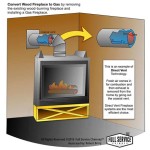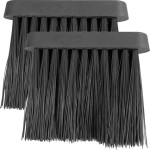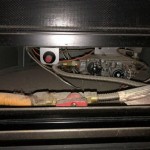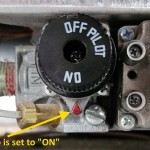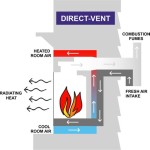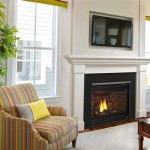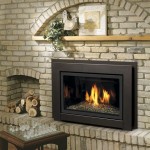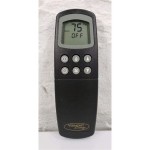Understanding Wood Pellet Insert Fireplaces
Wood pellet insert fireplaces offer a modern, efficient, and environmentally conscious alternative to traditional wood-burning fireplaces. These inserts are designed to fit directly into an existing fireplace opening, transforming a potentially inefficient source of heat into a powerful and controllable heating appliance. Understanding the workings, benefits, and considerations of wood pellet inserts is crucial for homeowners looking to enhance their home heating system. This article will explore the key aspects of wood pellet insert fireplaces, providing a comprehensive overview of their operation, advantages, and practical considerations.
Components and Operation of a Wood Pellet Insert Fireplace
A wood pellet insert fireplace operates on the principle of controlled combustion of compressed wood pellets. The key components of the system contribute to this process: the hopper, the auger, the combustion chamber, the blower, and the control system. Each of these elements plays a vital role in ensuring efficient and safe operation.
The hopper serves as the storage container for the wood pellets. Its size dictates how frequently the insert needs to be refilled. Hoppers range in size, generally holding between 40 and 130 pounds of pellets. A larger hopper allows for longer burn times between refills, crucial for individuals seeking extended heating without constant intervention.
The auger is a motorized screw that transports wood pellets from the hopper to the combustion chamber. The speed of the auger is regulated by the control system, which determines the amount of fuel delivered to the fire. This control allows for precise adjustment of the heat output, crucial for maintaining a consistent temperature within the home.
The combustion chamber is where the wood pellets are burned. It is designed to maximize heat production and minimize emissions. Air is introduced into the combustion chamber through strategically placed vents, fueling the fire and supporting efficient combustion. The design of the combustion chamber often incorporates features that enhance airflow and promote complete burning of the pellets.
The blower is a fan that circulates heated air from around the firebox into the room. This forced-air system significantly increases the efficiency of the insert by distributing heat more effectively than radiant heat alone. Blower speed is often adjustable, allowing homeowners to control the rate at which heat is dispersed throughout the room.
The control system is the brain of the wood pellet insert. It manages all aspects of the operation, including auger speed, blower speed, and ignition. Modern control systems may include programmable thermostats, remote controls, and even smart home integration, offering enhanced convenience and control over the heating process. These systems also typically include safety features such as automatic shut-off mechanisms in case of overheating or malfunction.
Advantages of Wood Pellet Insert Fireplaces
Wood pellet insert fireplaces offer a multitude of advantages over traditional wood-burning fireplaces and other heating systems. These benefits encompass efficiency, environmental impact, cost-effectiveness, convenience, and safety.
Efficiency is a primary advantage. Wood pellet inserts boast significantly higher efficiency ratings compared to traditional fireplaces. Traditional fireplaces can lose a large percentage of heat up the chimney, while wood pellet inserts typically have efficiency ratings of 75% to 90%. This means that a greater proportion of the energy contained in the wood pellets is converted into usable heat for the home, reducing fuel consumption and heating costs.
Compared to fossil fuels, wood pellets are a renewable resource, making wood pellet inserts a more environmentally friendly heating option. Wood pellets are typically made from waste wood products, such as sawdust and wood shavings, preventing these materials from ending up in landfills. Furthermore, wood pellet inserts produce lower emissions compared to traditional wood-burning fireplaces. Modern models are often equipped with advanced combustion technologies that minimize particulate matter and other pollutants released into the atmosphere.
While the initial investment in a wood pellet insert may be higher than other heating options, the long-term cost-effectiveness can be substantial. Wood pellets are generally less expensive than other fuels like propane or heating oil. The higher efficiency of pellet inserts also translates to lower fuel consumption, further reducing heating expenses. Additionally, some regions offer tax credits or rebates for the purchase of energy-efficient heating appliances, which can help offset the initial cost.
Wood pellet inserts offer a level of convenience not found in traditional wood-burning fireplaces. The automatic feeding system eliminates the need to manually load wood into the fire, and the programmable thermostat allows for precise temperature control. Ash production is significantly lower compared to traditional fireplaces, reducing the frequency of cleaning. Modern pellet inserts often feature self-cleaning mechanisms, further simplifying maintenance.
Wood pellet inserts are designed with safety in mind. The sealed combustion chamber prevents the escape of smoke and carbon monoxide into the home. Overheating sensors and automatic shut-off mechanisms ensure safe operation. The pellets themselves are easier and safer to handle compared to firewood, reducing the risk of splinters and other injuries.
Practical Considerations for Choosing and Installing a Wood Pellet Insert Fireplace
Selecting and installing a wood pellet insert fireplace requires careful consideration of several factors. These include sizing, venting, electrical requirements, installation costs, and maintenance.
Proper sizing is crucial for optimal performance. The heating capacity of the insert should be matched to the size of the area to be heated. An undersized insert will struggle to maintain a comfortable temperature, while an oversized insert may result in overheating and wasted fuel. Factors such as the home's insulation, window efficiency, and climate should be considered when determining the appropriate size. Consult with a qualified professional to ensure accurate sizing.
Proper venting is essential for safe and efficient operation. Wood pellet inserts require a dedicated vent pipe to exhaust combustion gases to the outside. The vent pipe must be installed according to manufacturer's specifications and local building codes. The venting system should be inspected and cleaned regularly to prevent blockages and ensure proper airflow. The type of venting required is typically a smaller diameter than a traditional chimney, often requiring a stainless steel liner to be installed within the existing chimney.
Wood pellet inserts require an electrical connection to power the auger, blower, and control system. The electrical requirements will vary depending on the model, but a standard 120-volt outlet is typically sufficient. A dedicated circuit is recommended to prevent overloading the electrical system. A backup power source, such as a generator, may be considered in areas prone to power outages.
Installation costs can vary depending on the complexity of the project. Professional installation is recommended to ensure that the insert is installed safely and correctly. Costs will include the price of the insert, the vent pipe, and the labor for installation. Additional costs may be incurred if modifications to the existing fireplace opening are required. Obtaining multiple quotes from qualified installers is advisable.
Regular maintenance is essential for ensuring the longevity and performance of the wood pellet insert. This includes cleaning the combustion chamber, ash pan, and vent pipe on a regular basis. The frequency of cleaning will depend on the amount of usage and the type of pellets used. An annual inspection by a qualified technician is also recommended to identify and address any potential problems. Proper maintenance will help prevent breakdowns and extend the life of the insert.

Pellet Fireplace Inserts Lopi Stoves Made In Usa

Pellet Fireplace Inserts Lopi Stoves Made In Usa

Wood Stoves Pellet Gas Fireplace Inserts

Gci60 Cast Iron Pellet Stove Insert Regency

Pellet Fireplace Inserts Lopi Stoves Made In Usa

Fireplace Insert Stoves Wood Gas Pellet Traditional Baltimore Maryland

Pellet Fireplace Inserts Complete Home Concepts

Pellet Stove Inserts Turn Drafty Fireplaces Into Heaters Complete Home Concepts

Pellet Fireplace Inserts Insert Installation In Burlington Wi More

Pellet Burning Fireplace Inserts Sierra Hearth And Home
Related Posts

